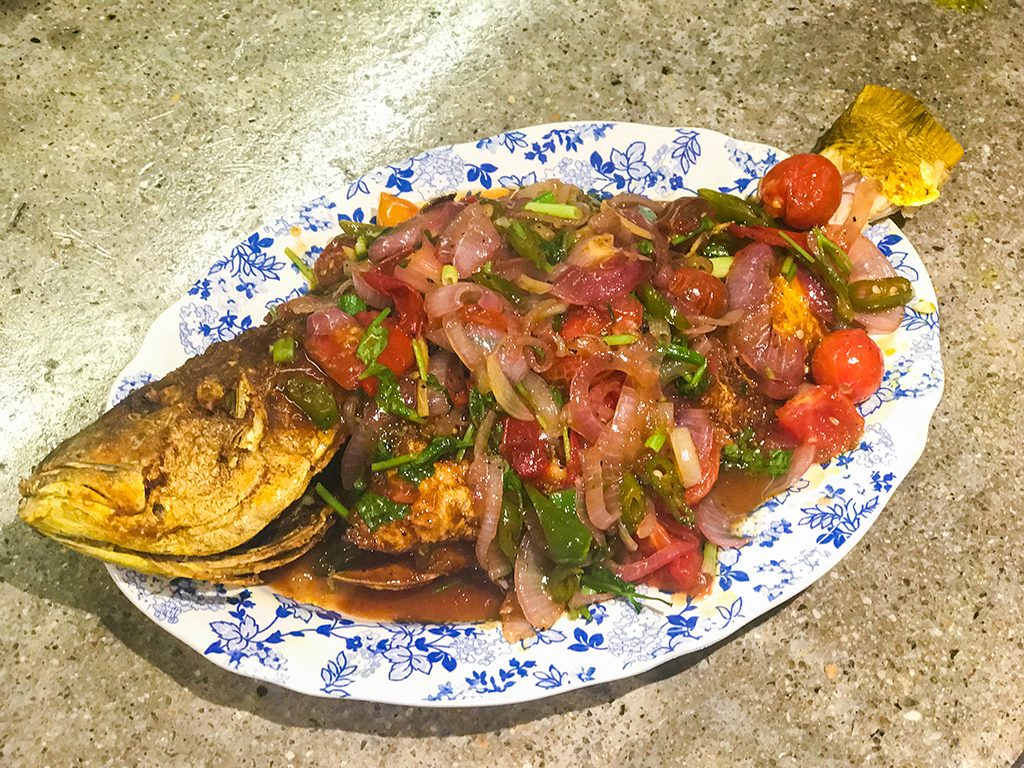 Sweet and sour fish mixes crispy fried fish with a flavour even the fussiest of eaters will enjoy
Sweet and sour fish mixes crispy fried fish with a flavour even the fussiest of eaters will enjoy
Sweet and sour fish is a classic Asian comfort food, especially when served with a bowl of steaming hot rice. The balanced flavours of sweet and sour is pleasant, subtly masking the fishy taste and aroma some may be less than enthusiastic about. It is also a staple takeout favourite on many TV series in the Western world, although not so much locally, even if we eat it at home or at restaurants on a regular basis.
There are two types of sweet and sour fish dishes common in Malaysia. Those with fried fish fillets are typically found in ‘rice with one dish’ or mixed rice types of establishments. Things get a little fancy when you get a whole fried fish doused with lots of sauce, never mind if it’s served in a seaside village roadside stall.
The strength of sweet or sour can also vary depending where you go, and sometimes a third dimension of spiciness gets thrown in as well. We have a little bit of that in our recipe, just for a mild heat but still kid-friendly enough. Think of it as training wheels for future, spicier dishes. After all, we’ve got to start them young!
Ingredients
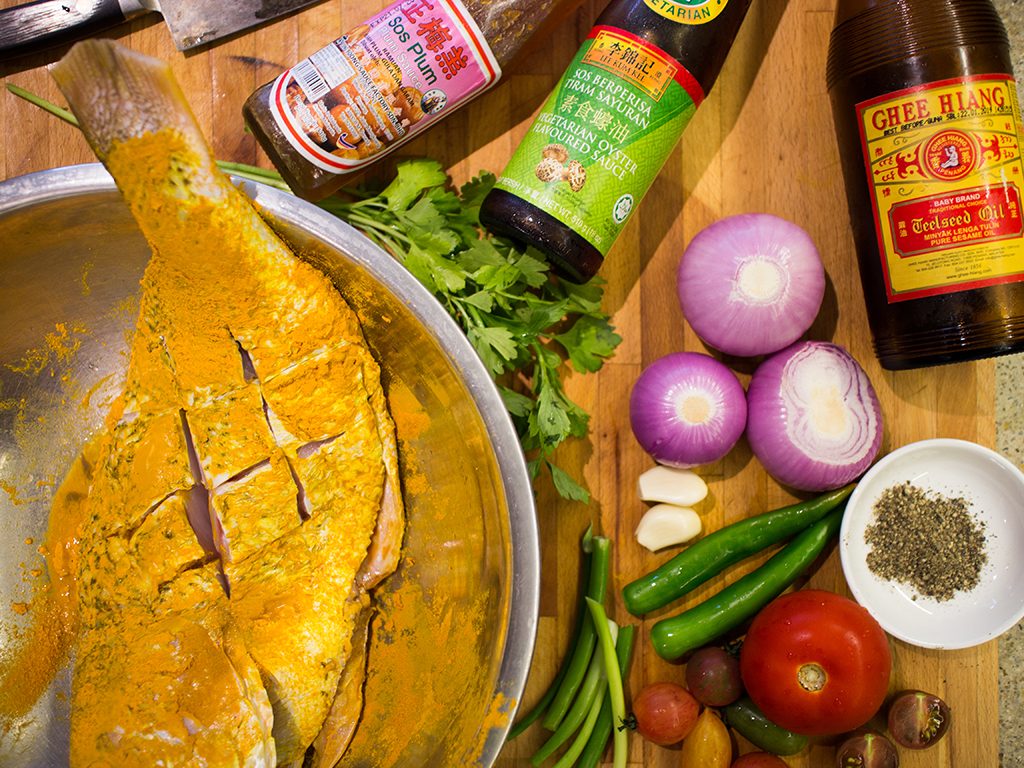
- 1 whole red snapper
- 2 tbsp turmeric powder
- 1 tbsp sea salt
- 1 tsp coarsely ground black pepper
- 2 cloves garlic
- 2 cm ginger
- 3 red onions
- 2 green chilies
- 2 large tomatoes
- 1 sprig spring onion
- 3 tbsp coriander, as garnish
- 2 tbsp lime juice
- ½ cup plum sauce
- 2 tbsp oyster sauce
- 2 tsp sesame oil
- 1 tbsp sugar
- ½ cup fish stock
- 1 tbsp corn flour
- 1 tsp salt
- cooking oil
Method: frying the fish
- Clean and gut your fish. Using a sharp knife, make diagonal cuts on both sides of the flesh, first by slicing in one direction, then the other. The cuts should be roughly 3cm apart and almost, but not completely, to the bone.
- Marinade your fish with turmeric powder, sea salt and black pepper by rubbing it all over the skin and set aside. You do not need to marinade in between the cuts or the cavities.
- Heat cooking oil in a wok until it is ready for deep frying, about 180°C to 200°C. You want to use a wok that is big enough to contain your fish, and oil enough to cover most of the fish while it is frying.
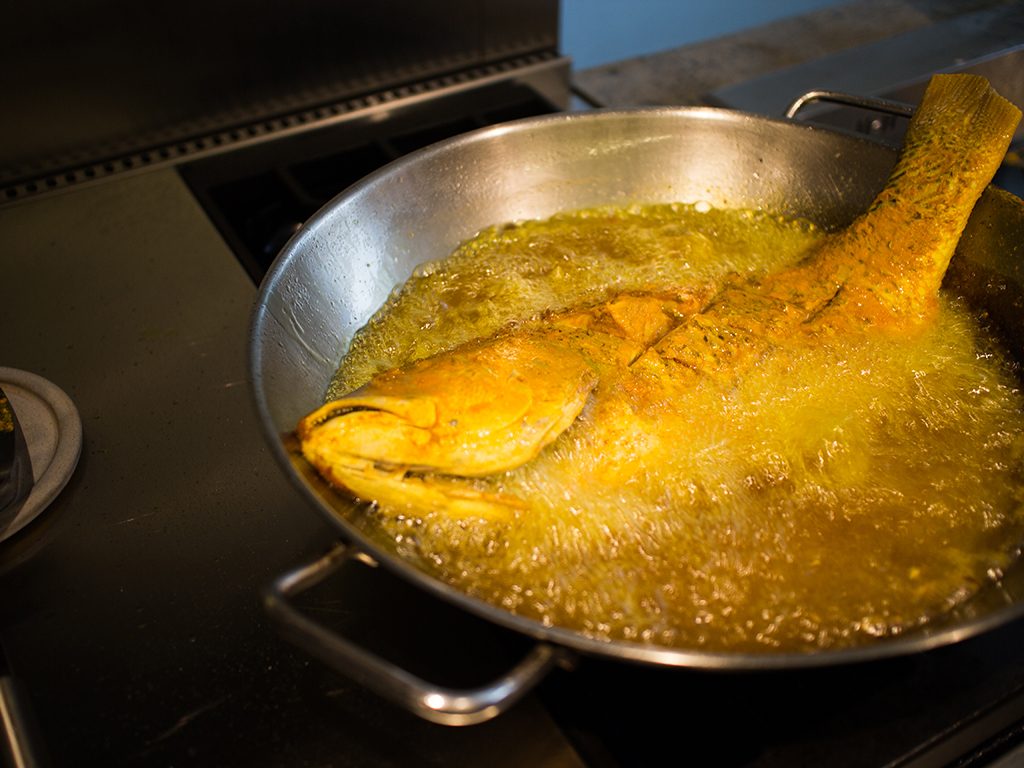
Watch out for flying hot oil! - Turn your fish twice while frying, letting it fully cook until the internal temperature reaches 63°C. Once cooked, remove fish to a dish or baking tray lined with kitchen towels to remove excess oil.
Method: for the sauce
- Slice thin garlic, onions and chilies. Cut tomatoes into eights. Julienne ginger and chop spring onion into roughly 1cm pieces.
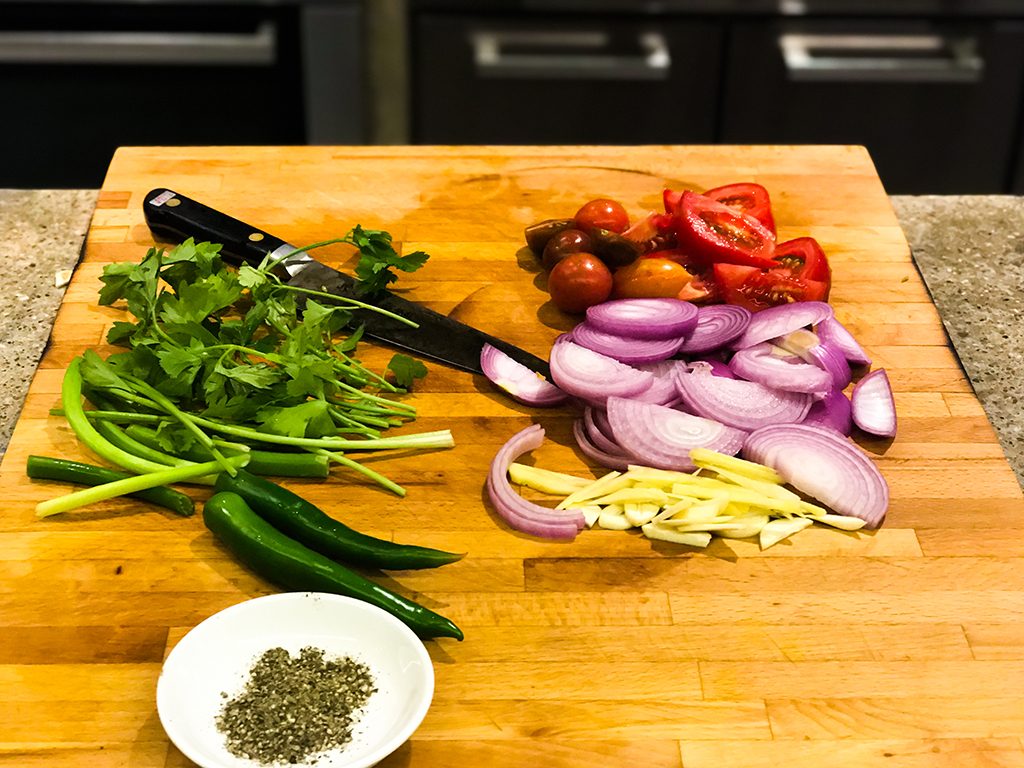
Vegetable prep in progress - Remove previously used oil from the wok and, using the same wok, heat 1 tablespoon of cooking oil.
- Add in the garlic and ginger and fry until fragrant.
- Next, add in onions, chilies, tomatoes and spring onions and cook until some juices have come out of the tomatoes and the onions are slightly translucent.
- Mix corn flour with 3 tablespoons of fish stock. Reserve.
- Add the rest of the ingredients into the wok including the rest of the fish stock, lime juice, plum sauce, oyster sauce, sesame oil, sugar and salt. Cook until the sauce thickens.
- Add the corn flour mixture and stir until mixed through thoroughly and the sauce further thickens.
- Finally, throw in the coriander.
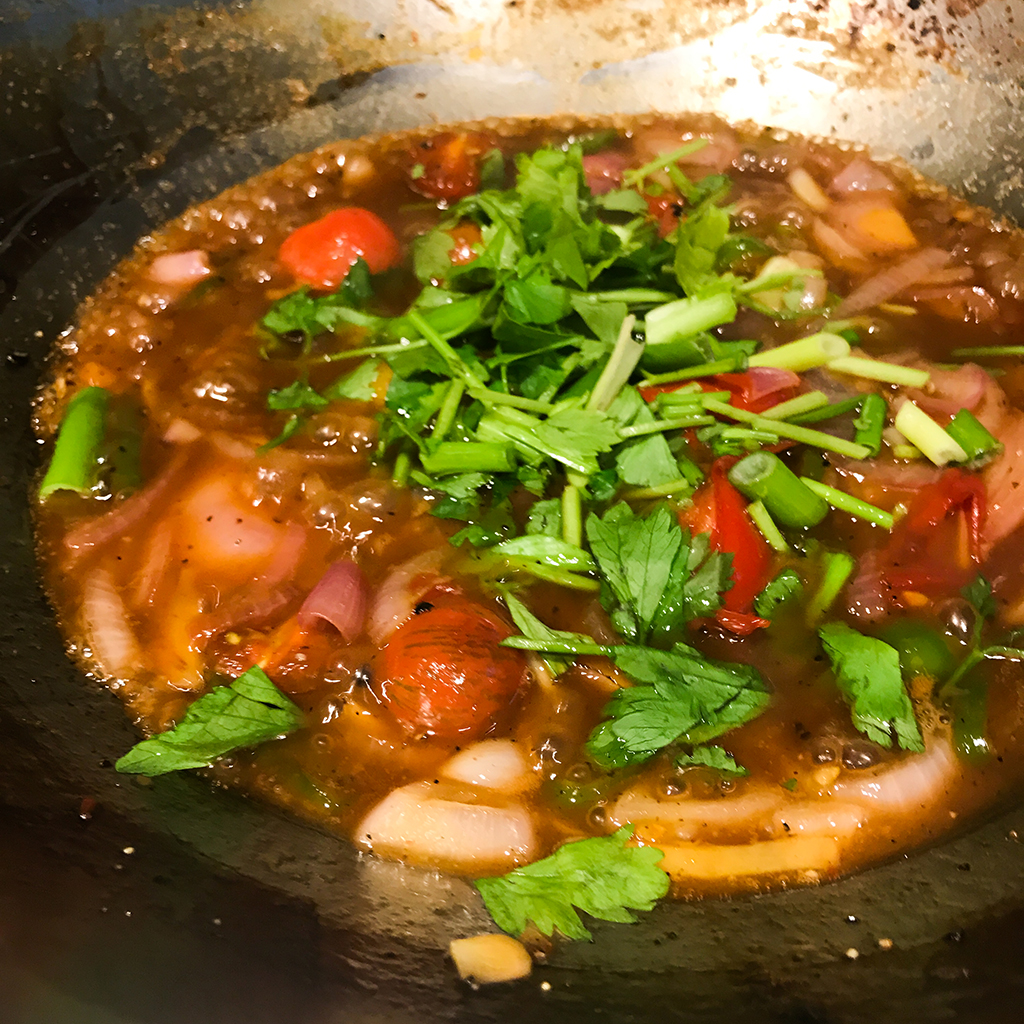
Mmmm… sauce… - When you’re ready to serve, transfer the fish to serving dish and pour the sauce all over it.
Extra tips
- Any fleshy white fish will go with this recipe.
- Don’t be ambitious and marinade your fish for hours or overnight. You don’t want the fish to end up turmeric-flavoured – unless that’s what you’re aiming for. Marinating at the start of your prep is sufficient.
- You can also use any type of tomatoes, just make sure it’s equivalent to two large tomatoes.
- If you like your onions chunkier, cut them into eights instead.
- You can also use water if you don’t have fish stock on hand.
- Yes, you can use two separate woks to prepare this dish, but that’s just one extra thing to wash later on!
Sweet and sour fish goes great with rice and vegetables. Try pairing it with asparagus belacan. Enjoy and hashtag us with #butterkicap if you try our recipe.
